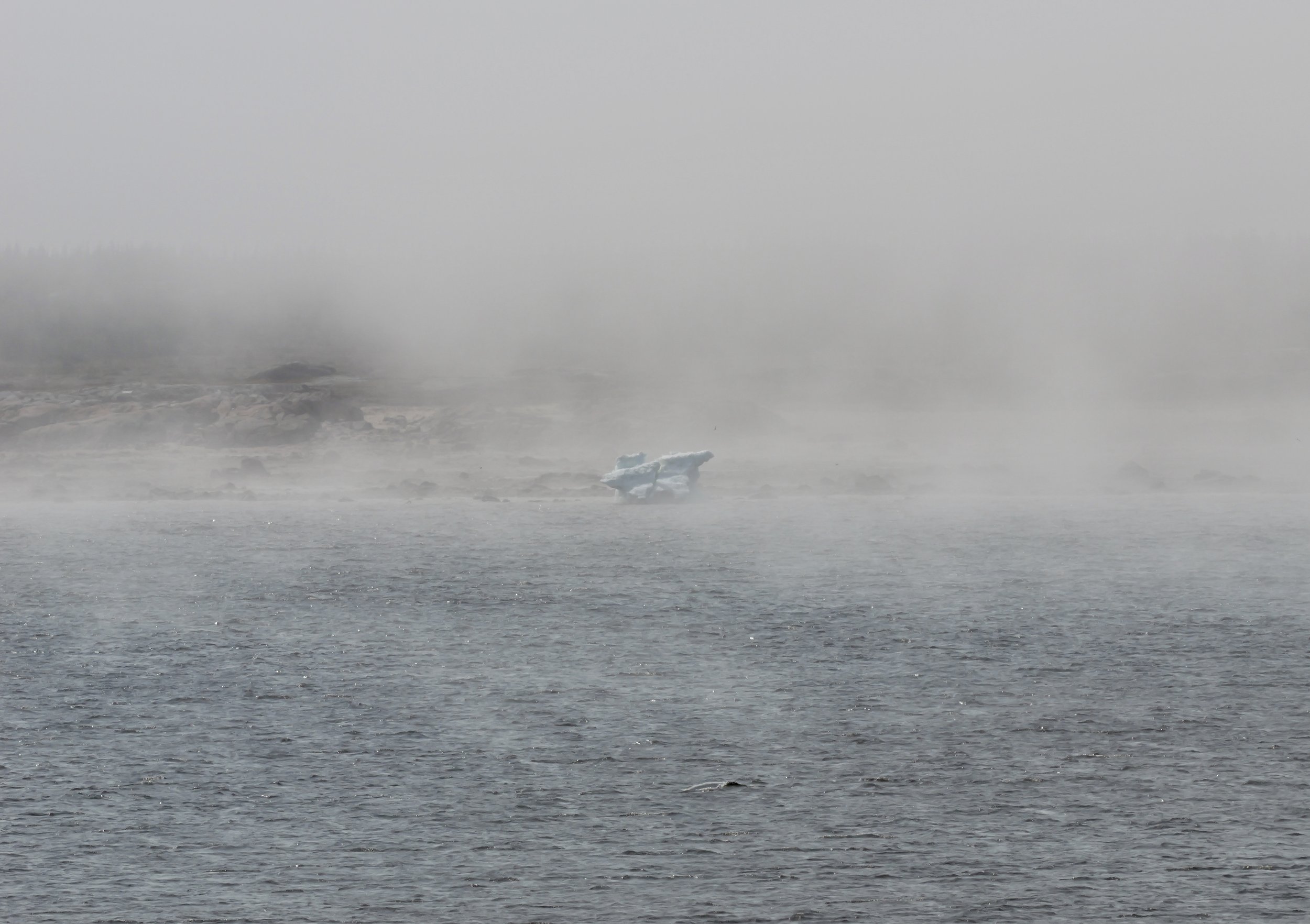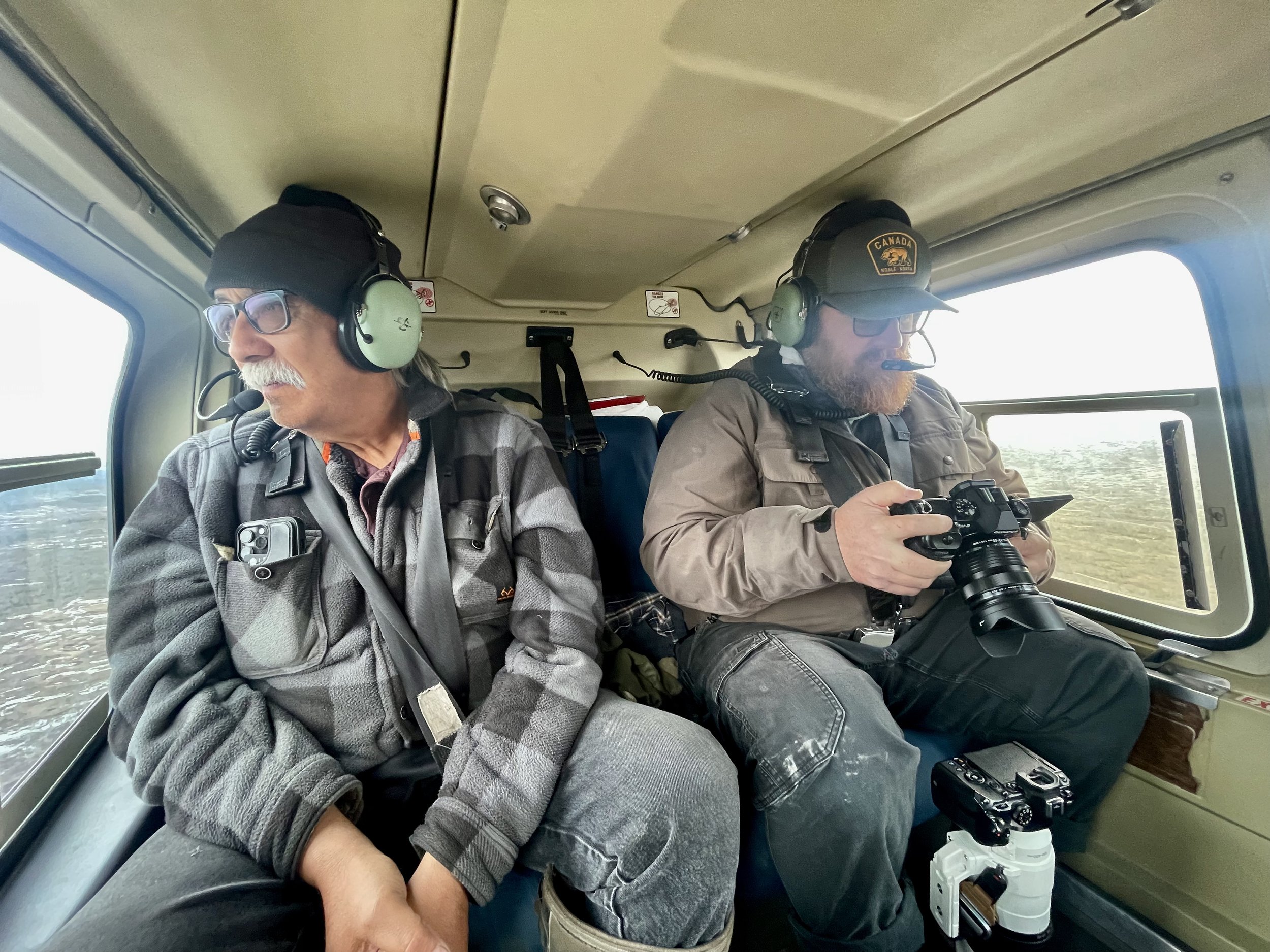Ursus Arctos in the Polar Bear Capital
DISPATCHES FROM churchill, manitoba
It’s late May in northern Manitoba. The passenger train from Thompson to Churchill is mostly empty. It’s the season of “in between”, a train attendant with a silver moustache, tells me.
The polar bears are still out riding ice on the Hudson Bay, feasting on seals. It’s too early to spot belugas from shore. The migratory birds are back to their breeding grounds, but birds don’t have the same magnetic draw as the iconic megafauna that drives tourism.
“It’s the best time of the year to be in Churchill — it’s quiet,” a born-and-raised local remarks.
I’ve visited Churchill twice before during the annual fall migration, as polar bears shore up along the bay, waiting for the ice to form. On both visits, I flew from Winnipeg.
Travelling by train gives perspective on the vastness of the wetlands and geographical isolation, and the striking necessity of the rail system, a life line for communities in northern manitoba, delivering food, medicine, and supplies.
View from the sixteen-hour train ride from Thompson to Churchill, Manitoba. (Photo: Trina Moyles).
We lurch along the tracks at twenty-kilometres an hour through dense muskeg and the northernmost edge of the boreal forest, a forest that’s rapidly expanding its reach due to warming temperatures and wildfires. As we venture into the peat swamplands, the cell service wanes, then goes dead.
It’s impossible to stay anonymous for long on the train. A handful of other travellers and I draw closer and trade stories back and forth over plastic cups of beer.
There’s a chef from the Albertan Rockies heading up for a seasonal gig with one of the lodges. Brothers from southern Manitoba going to visit a friend and help him put the finishing touches on a cabin. A university student heading home for the summer to work with Parks Canada. A couple in their fifties coming back from a trip down in Winnipeg.
People ask me why I’m travelling north to the last stop on the line and I tell them I’m writing a story for Canadian Geographic magazine.
“Oh, about polar bears,” they say with a casual, knowing nod.
“No, actually about grizzly bears,” I say, curious for their reaction.
Churchill is known widely as the “Polar Bear Capital of the World”, but few realize it’s a place where all three species of bears — including grizzlies and black bears — coexist. (Photo: Trina Moyles).
Not many people realize that the landscape around Churchill, the Hudson Bay Lowlands, is home to all three species of bears in North America. It’s one of the few places in the world where this ecological biodiversity and overlapping bear habitat exists.
The locals have stories, however. It’s as normal to talk about bears as it is to talk about the weather in Churchill, a colonial town built in the pathway of the polar bear migration.
But stories of grizzly bears really gets people talking in Churchill. Some say they’ve always been around — stories of sightings around York Factory go way back to the days of the fur trade. Others say their numbers are on the rise.
I’ve come to listen to these stories, to try to make sense of a story about ecological change and the mystery of Ursus arctos in a place where they aren’t legally recognized.
“I think people are both excited and a little nervous about grizzlies,” the university student tells me. “People are used to living with polar bears — but grizzly bears are an altogether different bear.”
The Northern Studies Research Centre. (Photo: Trina Moyles).
I meet up with Dr. Douglas Clark at the Northern Studies Research Centre, a research facility located twenty kilometres north of Churchill along the Hudson Bay.
Clark, dressed in loose jeans, a black Pink Floyd t-shirt, and worn moccasins, and shakes my hand. “You’re going to be sick of listening to me talk about bears by the end of this trip,” he says with a big grin. He’s a polar bear-human conflict specialist at the University of Saskatchewan, and a former ranger with Parks Canada in Wapusk National Park, a protected expanse of wetlands along the western shoreline of the Hudson Bay.
I’ve come to gain a behind-the-scenes look at Clark’s research for the Canadian Geographic story. Recently, he and his colleagues published a paper that reports sightings of grizzly bears in the Hudson Bay Lowlands have increased significantly over the last ten years.
Most grizzly bear sightings have been within 1 kilometre along the Hudson Bay coastline. (Photo: Trina Moyles).
Clark never intended to study grizzly bears, but grizzly bears seemingly found Clark.
In 1998, while flying over Wapusk National Park in a helicopter, he pounded on the pilot’s shoulder when he caught sight of a brown, shaggy mass galloping along the coastline. Clark was shocked when he realized what he was looking at was, indeed, a large, healthy grizzly bear. What was a grizzly bear doing in polar bear country?
The memory of the sighting never really left him.
And so, in 2013, when a grizzly bear showed up on a trail camera installed specifically to document polar bear activity in Wapusk National Park, his heart skipped a beat — and thus began a dedicated effort to unpack the mystery of grizzly bears in northern Manitoba.
Dr. Douglas Clark installs a trail camera along a ridge in Wapusk National Park. (Photo: Trina Moyles).
Clark is the kind of guy you’d want to sit next to at the bar. Warm, friendly, down-to-earth, and eager to share a story — particularly if it’s a story about a bear. And that’s exactly how he’s approaching his research on grizzly bears in the Lower Hudson Bay.
He’s listening to those who know the land best: local residents, cabin owners, hunters, trappers, guides, and tourism operators.
“Some of the people who’ve done the most interesting research are those whom when out on the land with local people who see something that just doesn’t fit their scientific understanding, instead of rejecting it, they follow it to see what’s going on,” he explains to me.
This strikes me as unique, particularly in the North where there’s a long colonial history of southern-based researchers extracting knowledge without meaningful community engagement, or benefit.
Over the next two weeks, I join Clark in the field as he looks for answers to the mystery of grizzly bears in northern Manitoba. We fly over Wapusk National Park, the largest peat wetlands in the world, where female polar bears come to dig their maternity dens in the summer, and spy caribou and a moose with two calves. Could grizzlies live here, too?
We meet locals who are curious about Clark’s research and possess sightings and theories of their own. People are eager to learn and share what they know. There’s a mixture of excitement and trepidation of what it will mean to live with Ursus arctos.
On June 9th, we spot a polar bear up on the rocks across from the old dump in Churchill. Clark points out the ring of grease around the bear’s neck.
“Seal grease,” he says.
It’s yet another question in the ecological uncertainty of grizzly bears in the Lower Hudson Bay: how will grizzlies impact polar bear populations, particularly if they’re swimming ashore earlier due to warming temperatures and melting sea ice?
What will be the impact of an increased grizzly bear presence in polar bear country? (Photo: Trina Moyles).
Stay tuned for the feature-length story in the Spring 2024 issue of Canadian Geographic.
Many kind thanks to Dr. Douglas Clark, staff at the Northern Studies Research Centre, photographer Drew Hamilton, Canadian Geographic, and many of the individuals in Churchill who generously shared their stories with me.
If you enjoyed reading this article, please consider “buying me a coffee” to help support my work as a writer.










